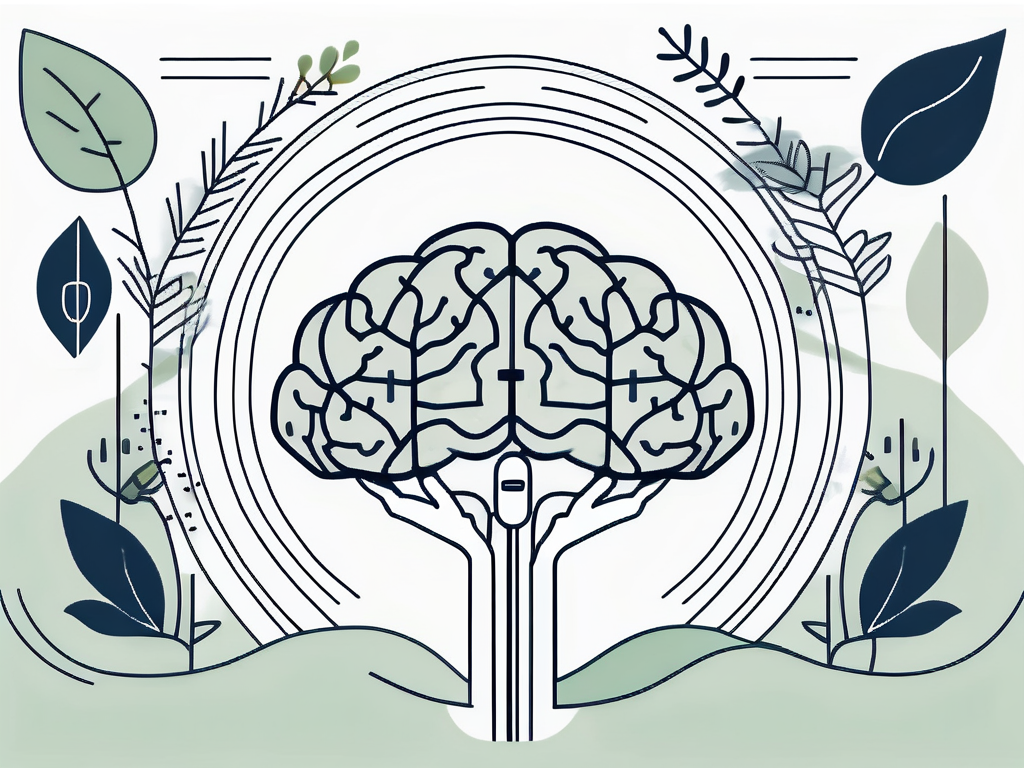The modern workplace is often characterized by constant distractions and overwhelming workloads. In such a landscape, the practice of mindfulness has emerged as a powerful approach to enhancing productivity while nurturing individual well-being. This article explores the relationship between mindfulness, focused work, and overall mental health.
Understanding Mindfulness
To appreciate the connection between mindfulness and productivity, it’s essential to first understand what mindfulness is, its historical roots, and how it plays a significant role in our daily lives.
Defining Mindfulness
Mindfulness can be described as the practice of maintaining a moment-by-moment awareness of our thoughts, feelings, bodily sensations, and surrounding environment. It involves paying attention without judgment, embracing life as it unfolds. This awareness encourages individuals to engage fully with their experiences rather than being lost in thought or distracted by external stimuli.
As an accessible practice, mindfulness can be cultivated through various techniques such as meditation, deep breathing, or simply observing one’s surroundings. The goal is to foster a sense of presence and clarity that can lead to improved focus and emotional regulation. In addition to these techniques, activities like yoga and tai chi also incorporate mindfulness principles, blending movement with awareness to enhance both physical and mental well-being.
The Origins of Mindfulness
The concept of mindfulness has its roots in ancient contemplative traditions, particularly in Buddhism. Originally, it was a fundamental aspect of meditation and spiritual practice aimed at reducing suffering and promoting insight. Over the years, mindfulness practices have transcended their religious origins and have been adapted into secular contexts.
In the late 20th century, the introduction of Mindfulness-Based Stress Reduction (MBSR) by Dr. Jon Kabat-Zinn brought mindfulness into mainstream psychology, emphasizing its therapeutic benefits. Today, mindfulness is widely practiced and integrated within various aspects of health, psychology, and business. This evolution has sparked a growing interest in research, leading to numerous studies that highlight the positive effects of mindfulness on mental health, including reductions in anxiety, depression, and chronic pain.
The Role of Mindfulness in Daily Life
Incorporating mindfulness into our daily routines can have lasting impacts on our quality of life. Mindful individuals are more attuned to their feelings and surroundings, which can lead to better decision-making and enhanced interpersonal relationships. Whether through mindful eating, observation, or intentional breathing, small habits can cultivate a greater sense of presence and reduce stress.
Moreover, the ability to pause and observe thoughts and emotions without immediate reaction helps foster resilience and emotional intelligence, equipping individuals to handle challenges in both personal and professional contexts. This practice not only enhances self-awareness but also encourages empathy towards others, as individuals become more adept at recognizing and understanding their own emotional landscapes. As a result, workplaces that promote mindfulness often see improved collaboration and communication among team members, leading to a more harmonious and productive environment.
The Science Behind Mindfulness and Productivity
Numerous studies have demonstrated the positive effects of mindfulness on both the brain and productivity levels. Understanding the scientific basis for these benefits can provide motivation for individuals and organizations to embrace mindfulness practices.

The Impact of Mindfulness on the Brain
Research has shown that mindfulness practices can lead to structural changes in the brain, particularly in areas associated with attention, emotional regulation, and stress response. For example, individuals who engage in regular mindfulness meditation often exhibit increased gray matter density in the prefrontal cortex, which is critical for decision-making and cognitive flexibility.
Furthermore, mindfulness practices have been linked to a decrease in activity in the default mode network (DMN), a brain network that is active during daydreaming and mind-wandering. Reduced DMN activity correlates with enhanced focus and engagement in tasks, thereby advancing productivity.
Additionally, studies suggest that mindfulness can enhance neuroplasticity, the brain’s ability to reorganize itself by forming new neural connections. This adaptability is crucial for learning and growth, allowing individuals to develop new skills and improve their problem-solving capabilities. As a result, the practice of mindfulness not only benefits immediate cognitive functions but also fosters long-term intellectual development, making it a valuable tool for both personal and professional advancement.
How Mindfulness Enhances Productivity
By sharpening focus and minimizing distractions, mindfulness can lead to higher levels of productivity in the workplace. A study conducted by the University of California found that employees who practiced mindfulness exhibited improved performance in tasks requiring attentional control and focus, resulting in higher quality outcomes.
Moreover, mindfulness fosters a state of flow, where individuals become deeply immersed in their work. This immersive experience leads to increased creativity, motivation, and ultimately, greater satisfaction in the tasks undertaken, contributing positively to both personal and organizational success.
In practical terms, implementing mindfulness techniques in the workplace can take many forms, from short meditation sessions to mindful breathing exercises during breaks. Organizations that prioritize these practices often see not only enhanced productivity but also improved employee morale and lower turnover rates. By creating a culture that values mindfulness, companies can cultivate a more engaged and resilient workforce, ultimately driving better business outcomes.
The Psychological Benefits of Mindfulness
The psychological benefits of mindfulness extend beyond productivity. Regular practice can reduce anxiety, depression, and stress levels, which are common obstacles to effective work. By developing a more positive outlook and greater emotional resilience, individuals can better cope with workplace challenges and maintain motivation.
In addition, mindfulness encourages a greater sense of self-awareness, allowing individuals to identify unproductive patterns of behavior or thought. Through self-reflection, they can cultivate healthier habits and relationships that further enhance their capacity for focused work.
Moreover, the practice of mindfulness has been shown to improve interpersonal relationships within the workplace. By fostering empathy and compassion, mindfulness encourages better communication and collaboration among team members. As individuals become more attuned to their own emotions and those of others, they can navigate conflicts more effectively and create a supportive work environment that nurtures collective success. This interconnectedness not only enhances individual well-being but also contributes to a more harmonious and productive organizational culture.
The Relationship Between Mindfulness and Well-being
Mindfulness is not just about improving productivity; it significantly contributes to overall well-being. The interplay between mindfulness practices and well-being is profound, leading to many emotional and physical health benefits.

Mindfulness as a Stress-Relief Tool
One of the most notable aspects of mindfulness is its inherent ability to reduce stress. Mindfulness techniques such as meditation, body scanning, and mindful breathing have been shown to lower cortisol levels—often dubbed the stress hormone. Lower stress levels can prevent burnout and promote a healthier work-life balance.
Furthermore, these practices encourage individuals to engage with their worries in a constructive manner, allowing them to develop coping strategies and mitigate the negative effects of stress in both personal and professional domains.
Mindfulness and Emotional Well-being
Engaging in mindfulness can enhance emotional well-being by fostering a greater understanding of one’s emotions and promoting a more compassionate attitude toward oneself. Mindfulness encourages acceptance of emotions rather than suppression, leading to healthier emotional processing.
This acceptance enables individuals to navigate their emotions with greater ease, reducing instances of emotional volatility that can hinder productivity. As emotional well-being improves, so too does engagement and satisfaction in daily activities, whether at work or at home.
Physical Health Benefits of Mindfulness
Mindfulness has also been associated with numerous physical health benefits. Research indicates that regular mindfulness practice can lower blood pressure, enhance immune function, and improve sleep quality. These physical advantages contribute significantly to an individual’s overall health, directly impacting their ability to perform at work.
By integrating mindfulness into their lives, individuals can experience an enhanced sense of vitality and well-being, leading to increased productivity in their professional endeavors.
Implementing Mindfulness in the Workplace
The integration of mindfulness into workplace culture can facilitate enhanced productivity, creativity, and employee satisfaction. Organizations are increasingly recognizing the value of mindfulness, yet implementing effective practices requires thoughtful approaches.

Mindfulness Techniques for Better Focus
Simple mindfulness techniques can be incorporated into daily work routines. Techniques such as the “5-4-3-2-1” grounding exercise, which prompts individuals to identify five things they can see, four things they can touch, three things they can hear, two things they can smell, and one thing they can taste, can bring focus back to the present moment.
Additionally, encouraging short mindfulness breaks throughout the day can significantly enhance focus and decrease mental fatigue. Organizations can incorporate guided meditations or mindfulness exercises into their workdays to promote mental clarity and engagement.
Creating a Mindful Work Environment
Creating a mindful work environment involves fostering a culture that values presence, awareness, and well-being. Organizations can establish quiet zones for meditation, provide resources on mindfulness, and cultivate an atmosphere where employees feel empowered to practice mindfulness without judgment.
Leadership plays a crucial role in modeling mindfulness practices and supporting initiatives that promote overall well-being in the workplace. By prioritizing mindfulness, organizations can enhance their employees’ quality of life and productivity.
Mindfulness Training for Employees
Offering mindfulness training sessions for employees can provide them with the tools and techniques needed to cultivate mindfulness in their daily lives. Programs such as Mindfulness-Based Stress Reduction (MBSR) or workshops focused on specific mindfulness techniques can be incredibly beneficial.
Such training not only equips employees with effective stress management tools but can also enhance their emotional intelligence, collaboration skills, and overall workplace satisfaction, amplifying both individual and collective productivity.
In conclusion, the connection between mindfulness and productivity is robust, highlighting the importance of focused work in promoting well-being. By understanding and implementing mindfulness practices in both personal and professional contexts, individuals and organizations can experience transformative changes that foster a healthier, more productive work environment.





